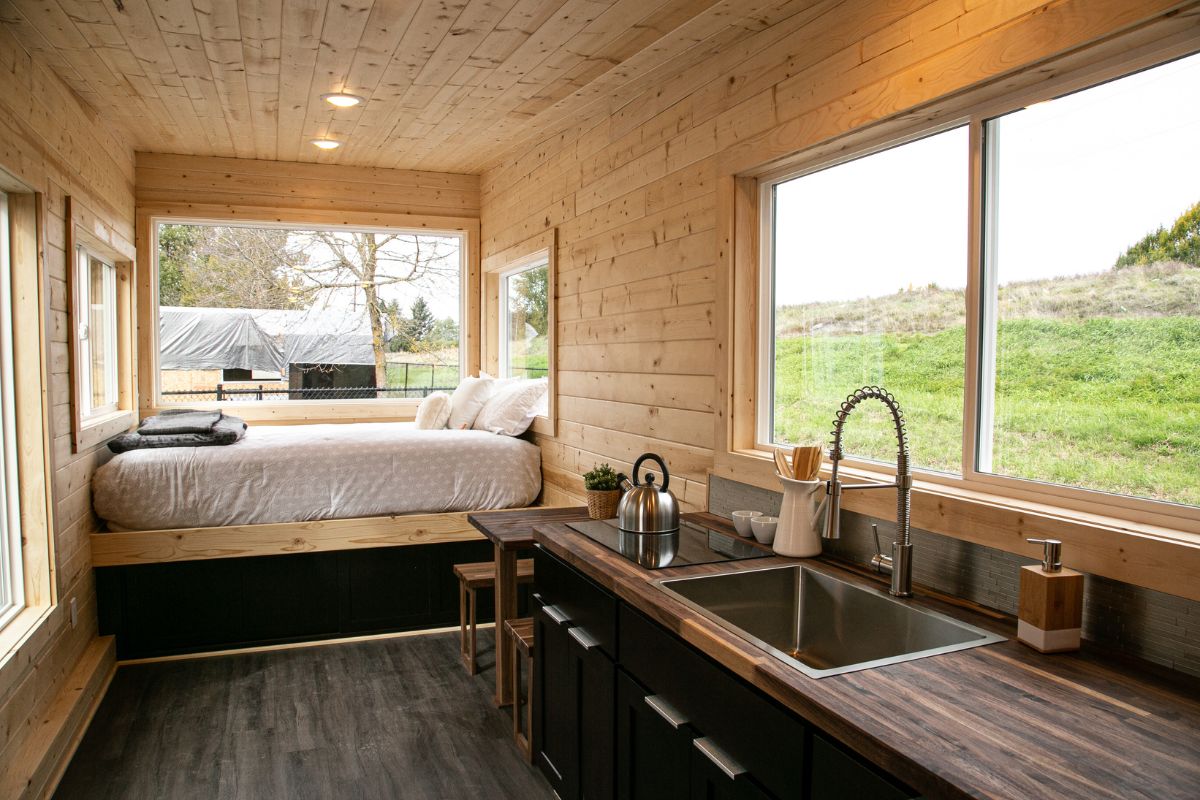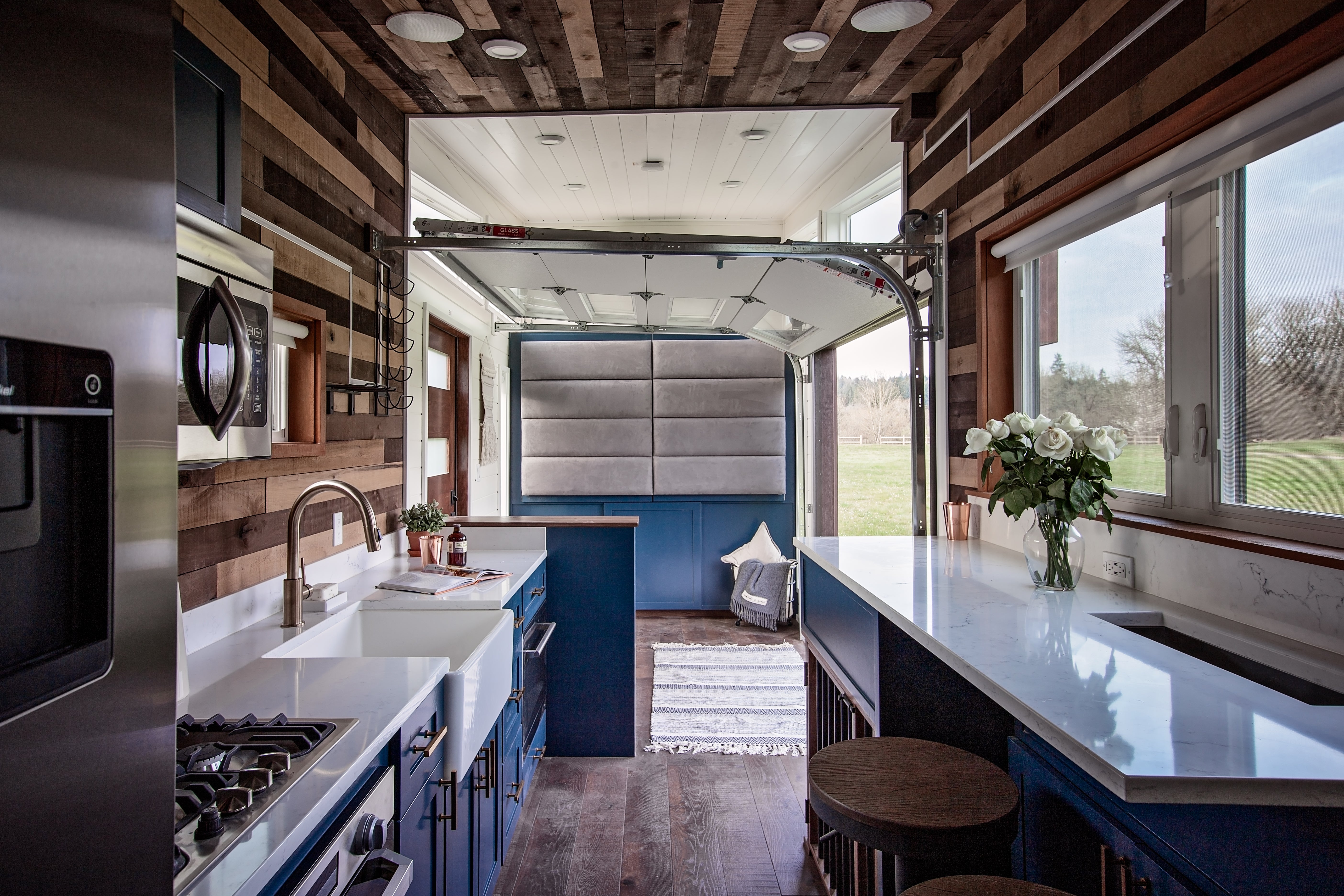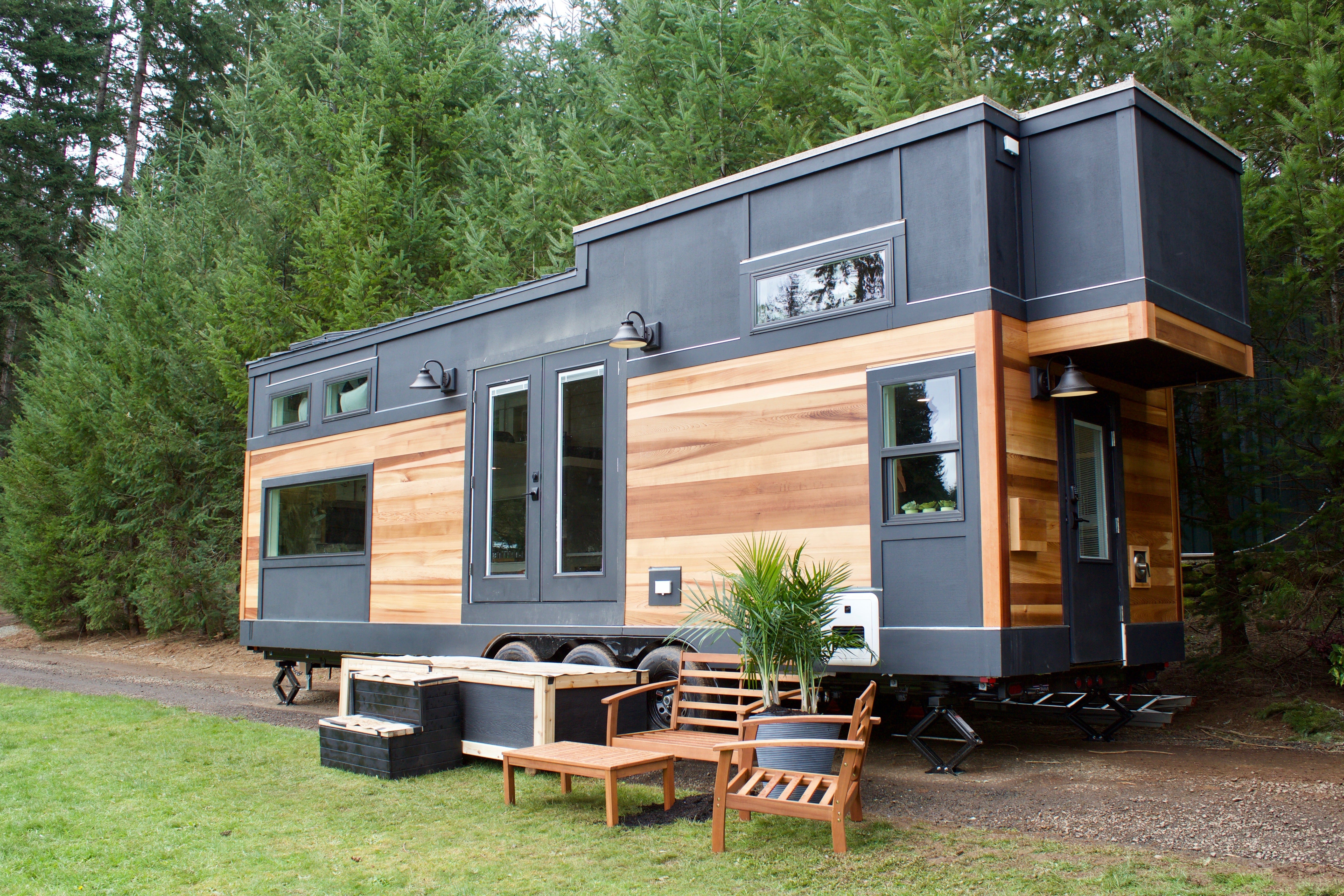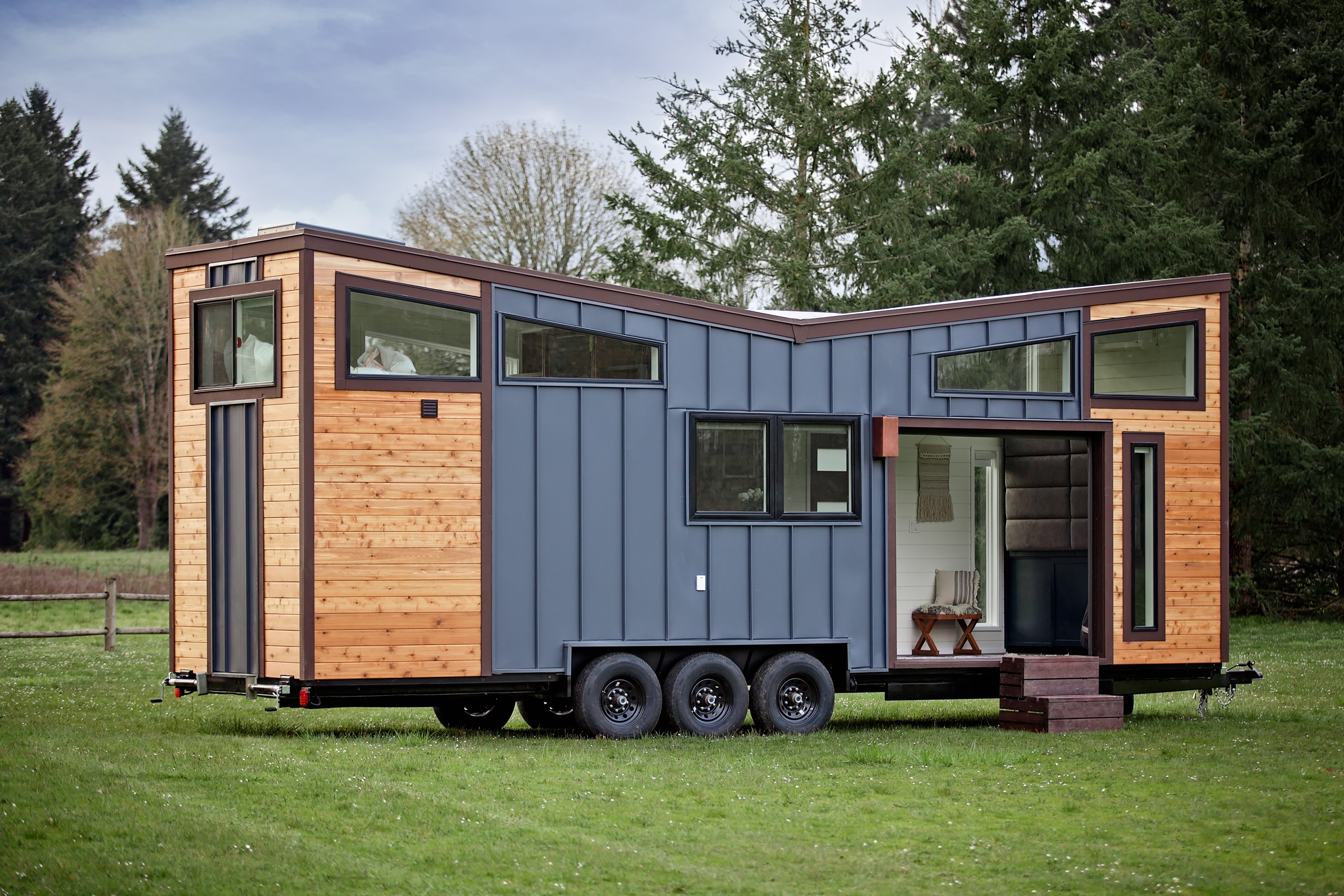Tiny houses are revolutionizing urban living by providing affordable housing solutions in high-cost areas. By maximizing space and functionality, these compact homes lower living expenses, from mortgages to utility bills. They promote sustainability, using eco-friendly materials and reducing waste. Tiny house communities also foster social connections, creating supportive environments that combat isolation. As this movement grows, innovative designs and financing options make tiny homes even more accessible. Discover how these trends shape the future of housing.
Key Takeaways
- Tiny houses offer lower upfront costs and smaller mortgages, making homeownership more accessible to individuals and families facing high housing prices.
- Their compact design utilizes fewer materials and energy, promoting sustainable living and reducing the overall cost of living.
- Tiny house villages foster community engagement and collaboration, creating supportive environments that enhance quality of life and reduce isolation.
- Zoning advocacy related to tiny homes encourages local governments to consider more affordable housing solutions, addressing regulatory barriers to homeownership.
- Innovative designs and off-grid options allow for affordable living while minimizing environmental impacts, appealing to a growing demand for sustainable housing.
The Rise of Tiny Houses in Urban Areas
As urban populations continue to swell, tiny houses have emerged as a creative solution to the affordable housing crisis. You might find these compact dwellings appealing for their efficiency and charm. In densely populated cities, where space is limited and housing prices skyrocket, tiny homes offer an innovative alternative. They maximize functionality without sacrificing comfort, allowing you to live more sustainably. Communities are beginning to embrace this trend, creating designated areas for tiny home clusters that foster a sense of belonging. Furthermore, tiny houses often promote a minimalist lifestyle, encouraging you to prioritize experiences over possessions. As you explore the rise of tiny homes, you'll see how they're not just a trend but a viable response to a pressing urban challenge.
Understanding the Financial Benefits of Tiny Home Living
Living in a tiny house can considerably reduce your financial burden, making it an attractive option for many. With lower upfront costs, you can often purchase a tiny home for a fraction of the price of a traditional one. This means smaller mortgages or even the possibility of buying outright, freeing up cash for other investments. Your utility bills will likely shrink too; less space means less energy consumption, which can lead to significant savings over time. Additionally, maintenance costs are generally lower, allowing you to allocate funds elsewhere. Finally, many tiny homes are designed to be mobile, giving you flexibility in location and potentially lowering your property taxes. Embracing tiny living can truly enhance your financial freedom.
Sustainability and Environmental Impact of Tiny Houses
While many people seek eco-friendly solutions in their lives, tiny houses offer an appealing way to considerably reduce one's environmental footprint. By living in a smaller space, you naturally consume less energy and materials, which leads to a decrease in overall resource use. Tiny houses often utilize sustainable materials, such as reclaimed wood and recycled steel, further enhancing their eco-friendliness. Additionally, their compact size allows for efficient heating and cooling, minimizing energy consumption. Many tiny homes incorporate renewable energy sources, like solar panels, empowering you to produce your own electricity. With less waste generated and a simpler lifestyle, tiny houses promote a deeper connection with nature while addressing the pressing need for sustainable living solutions in today's world.

Designing for Functionality: The Art of Minimalism
When designing a tiny house, embracing minimalism isn't just a trend—it's a necessity that enhances both functionality and comfort. You'll want to focus on multi-purpose furniture, like a fold-down table or a bed with built-in storage. Every inch counts; consider vertical space for shelves or cabinets to keep your living area open and airy. Natural light plays an essential role in making small spaces feel larger, so use large windows or skylights when possible. Choosing a neutral color palette can also create an illusion of spaciousness. Prioritize what you truly need, eliminating excess items that clutter your space. This intentional design approach not only maximizes functionality but also fosters a sense of peace, making your tiny house a true sanctuary.
Community Living: The Social Benefits of Tiny House Communities
As you explore the world of tiny house communities, you'll find that these unique living arrangements foster a profound sense of connection among residents. Living in close proximity encourages friendships and collaboration, creating a supportive network where neighbors look out for one another. You'll discover that shared amenities, like gardens and communal spaces, provide opportunities for gatherings, potlucks, and skill-sharing workshops, enriching the community experience. This shared lifestyle cultivates a sense of belonging and reduces feelings of isolation, which is essential in today's fast-paced world. Plus, the lower cost of living allows residents to invest more in social activities and community projects. Ultimately, tiny house communities not only tackle housing affordability but also enhance social ties and strengthen community bonds.
Zoning Regulations and Legal Challenges
Maneuvering the maze of zoning regulations can often feel overwhelming, especially for those enthusiastic to embrace the tiny house lifestyle. Many areas have outdated codes that don't recognize tiny homes as legitimate dwellings, which can lead to legal challenges. You might find that local governments impose minimum square footage requirements or restrictions on where you can park your tiny house. Often, you'll need to advocate for changes, lobbying for amendments that support tiny living. Engaging with local officials and community members can help raise awareness about the benefits of tiny houses. By working together, you can challenge these regulations, paving the way for a future where affordable housing options, like tiny homes, are more accessible to everyone.
Financing Options for Tiny House Buyers
Maneuvering the world of financing for tiny houses can be tricky, especially since traditional mortgage options often don't apply. Instead, consider personal loans or RV loans, which can provide the necessary funds without the constraints of a mortgage. Credit unions and local banks may offer better rates and more flexible terms, so don't hesitate to shop around. If you're building, a construction loan can be a good option, allowing you to pay for materials and labor upfront. Additionally, some tiny house builders offer financing plans tailored to their homes, making the process smoother. Remember, it's vital to have a clear budget and understand your financial situation before diving in. You're taking a unique step toward affordable living, so make sure you choose the right financing path.
Case Studies: Successful Tiny House Projects
Across the country, numerous successful tiny house projects showcase the potential of this lifestyle to tackle the affordable housing crisis. For instance, in Portland, Oregon, the "Community of Tiny Houses" offers affordable living in a supportive environment. Residents benefit from shared resources while maintaining their independence. In Texas, the "Tiny House Village" provides affordable options for individuals seeking to downsize without sacrificing quality of life. These projects emphasize community engagement and sustainability, proving that tiny living can be both practical and desirable. You'll find that the collaborative spirit in these developments fosters connections among residents, transforming neighborhoods. As tiny homes gain traction, they demonstrate a viable solution to high housing costs while promoting innovative living solutions.
Tiny Houses as a Solution for Homelessness
While many urban areas grapple with rising homelessness rates, tiny houses emerge as a promising solution to provide immediate shelter and stability. These compact homes not only offer a roof over one's head but also foster a sense of community and dignity. With lower construction costs and quicker build times, tiny houses can be rapidly deployed in vacant lots or repurposed spaces. You'll find that many successful projects integrate supportive services, helping residents shift into permanent housing. By creating safe, affordable environments, tiny house initiatives empower individuals to regain their footing. This innovative approach addresses both the housing crisis and the pressing need for effective homelessness solutions, making it a viable alternative worth considering for cities facing this urgent challenge.
The Future of Tiny Housing: Trends and Innovations
As the demand for affordable housing continues to rise, the tiny housing movement is evolving with innovative designs and sustainable practices that promise to reshape communities. You'll notice trends like multifunctional furniture and modular designs, making tiny homes even more adaptable to your lifestyle. Smart home technology is also on the rise, providing energy efficiency and convenience that enhances your living experience. Communities are embracing tiny house villages, promoting a sense of belonging and cooperation among residents. Additionally, eco-friendly materials and off-grid options are becoming standard, addressing environmental concerns while reducing costs. By embracing these trends, tiny housing isn't just a solution; it's a movement towards a more sustainable and inclusive future for everyone looking for affordable living options.
Conclusion
Tiny houses aren't just a trend; they're a viable solution to the affordable housing crisis. By embracing minimalism and community living, you're not only saving money but also making a positive impact on the environment. As innovative designs emerge and financing options expand, tiny homes can provide a pathway to stability and sustainability. Whether you're looking to downsize or find a new way to live, tiny houses offer a fresh perspective on what home truly means.






Share: